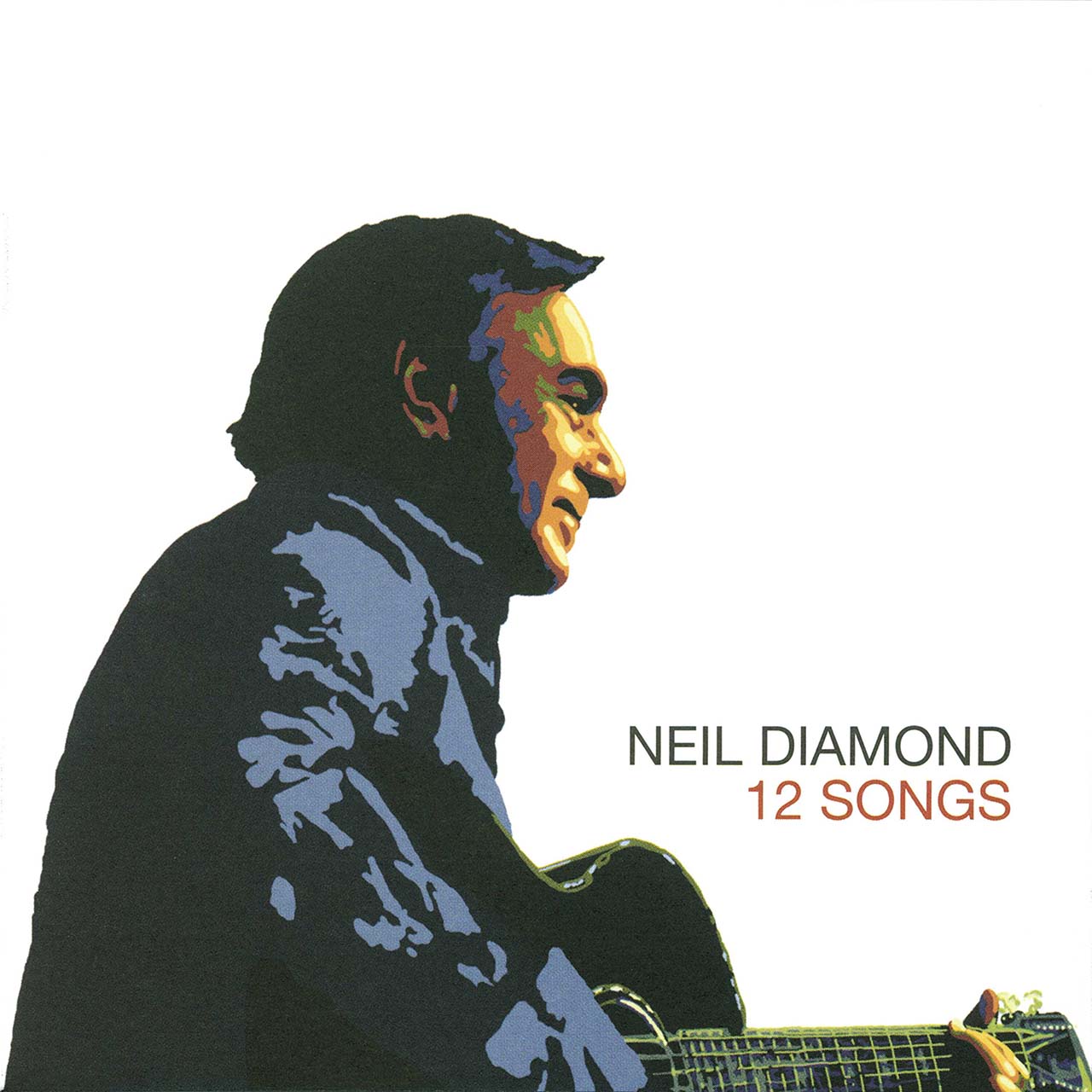Neil Diamond had nothing left to prove in 2005. But with the late-career classic 12 Songs, he proved it anyway. By now Diamond had been through so many phases—upstart rocker, brooding folk-rocker, larger than life entertainer—that you might have forgotten he was above all a songwriter. Enter Rick Rubin, fresh from a production triumph with Johnny Cash (including a Diamond song, “Solitary Man”) and ready to work the same magic.
In Diamond’s catalogue, 12 Songs didn’t come out of nowhere: His previous album Three Chord Opera was his first entirely self-written one in decades, and already evinced a turn away from the glossy productions of old. But with Rubin he took things a few steps further. As he explained in the album’s liner notes, the producer insisted that he devote extra time to the writing: “Rick was determined not to rush the process, but to wait until we got to the essence of the songs I was working on.”
Listen to the digital deluxe edition of Neil Diamond’s 12 Songs now.
Rubin also insisted that Diamond pick up his guitar again, and the strummed acoustic became the musical heart of the record. The album isn’t quite as stripped-down as it sounds: There are a good dozen other musicians, including familiar names like studio vet Larry Knechtel (who shares piano duties with modern pop figure, Roger Joseph Manning from Jellyfish), and the Heartbreakers’ Mike Campbell (the album’s musical MVP, doing guitar and arrangements). Yet the album feels intimate from start to finish: On the opening “Oh Mary” your ears expect a roomful of voices to come in during the chorus, but it remains just one man chanting his beloved’s name, and all the more effective for it.
Like the Cash albums, 12 Songs puts the emphasis on more serious material. But there’s a big difference: Cash’s American Recordings series is full of songs about creeping mortality, getting darker with each installment. But Diamond didn’t really roll that way: His own advancing-age song, “Hell Yeah,” is both generous and good-humored. He calls himself a “lucky old dreamer” who’s “been around a good long while” and hell yeah, he learned a bit and had a great time. Then he takes time to speak directly to the listener: “I hear you wondering out loud, are you ever gonna make it?…Just believe you can. Hell yeah, you will.”
Likewise, “Man of God” harks back to the philosophical Diamond of “I Am..I Said”: The message here is that you can find God in love or in a song, even if you “never learned to pray.” It gets an extra touch of gospel with Hammond organ from the great Billy Preston, sadly making his last recorded appearance.
But this is still a Neil Diamond album, and the heart is still his natural territory—whether he’s mourning a lost love on “Evermore” or celebrating a new one on “Save Me a Saturday Night” (those songs are tellingly placed back to back). His classic-model, Brill Building pop instincts are in the mix as well: “I’m On to You” echoes his swaggering Bang Records days, and is the only track to include drums. The sweetly nostalgic “Delirious Love” already has a bit of Beach Boys feel, with an easy-rolling “Help Me Rhonda” type groove, so it made perfect sense to cut an alternate version with Brian Wilson doing the backing-vocal honors.
12 Songs wound up getting some of his best reviews in decades, and became one of his few albums to hit the Top 10 without the benefit of a big hit single. And it answered the question of whether Neil Diamond could pull off a comeback at age 64: Hell yeah, he could.
Listen to the digital deluxe edition of Neil Diamond’s 12 Songs now.


